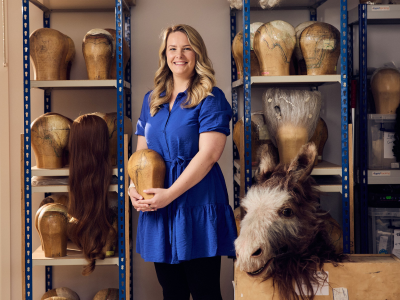
Continuing to reduce our environmental impact
Glyndebourne remains as committed as ever to finding new ways to reduce its impact on the environment - read on to find out more about our latest results and initiatives
Eight years on from the launch of its wind turbine, Glyndebourne remains as committed as ever to finding new ways to reduce its impact on the environment. In the period since it was commissioned, the turbine has generated 98% of our electricity consumption, resulting in a 50% reduction in carbon emissions.
Galvanised by this success, we continue to find new ways to make our operations more sustainable. In 2018 we were awarded the highest achievement for improvement prize at the Creative Green Awards, in recognition of our performance in cutting our environmental footprint.
- A new waste management contract to ensure Glyndebourne operates zero waste to landfill and a 21% reduction in absolute waste tonnage between 2018 and 2019
- A site-wide ban on non-recyclable takeaway coffee cups for staff and audience, around 50,000 of which were being used each year
- Installation of more energy-efficient LED lighting. In 2019 Glyndebourne replaced 236 lights in its back of house space to achieve a 44% reduction in electricity use in that area – enough to power 3,600 UK households for a year
- Introduction of food recycling to dispose of food waste generated by catering for 45,000 diners each year at the Glyndebourne Festival. The waste is now sent to anaerobic digestion facilities to be processed to produce energy and bio fertiliser for use in growing crops
- A partnership with Recorked UK to recycle or resell wine and champagne corks, most of which will not break down in landfill
- A switch to biodegradable face wipes by the Glyndebourne make-up department
The Glyndebourne turbine
Glyndebourne’s 67 metre wind turbine was commissioned in 2012 following an analysis of our carbon emissions that revealed it was the single largest financially-viable initiative that could then be undertaken to reduce our own-generated footprint.
Latest figures show that the turbine continues to outperform its target. In 2019 it produced an annual yield of 1,436 megawatt-hours (MWh) with an average annual wind speed of 5.89 metres per second. This is the equivalent of 92% of the electricity utilised by Glyndebourne during the past year, exceeding the annual 90% target. Glyndebourne recently ran public tours of the wind turbine offering visitors the chance to learn more about its operation and impact.
Energy saving
The success of the turbine is supported by a company-wide effort to reduce electricity consumption that has delivered a 50% reduction in energy use per performance between 2008 and 2019. Some of the most significant energy-saving measures that have been taken are:
- Modification of the air conditioning system to reduce energy consumption
- Replacement of auditorium and car park lights with low-energy LEDs
- Installation of timers and light sensors to ensure that lights are only in use when required
Other longstanding initiatives include significantly improved recycling facilities, on site electric car charging for staff and visitors and a free coach service from Lewes to encourage audiences to travel to Glyndebourne by train.
Glyndebourne is committed to continuing to improve its environmental performance and recently signed up to the Spotlight Programme, which is being delivered by Julie’s Bicycle on behalf of Arts Council England (ACE). Over the next four years the programme will be working closely with 30 of the UK’s largest arts organisations to achieve measurable reductions in energy use.


















